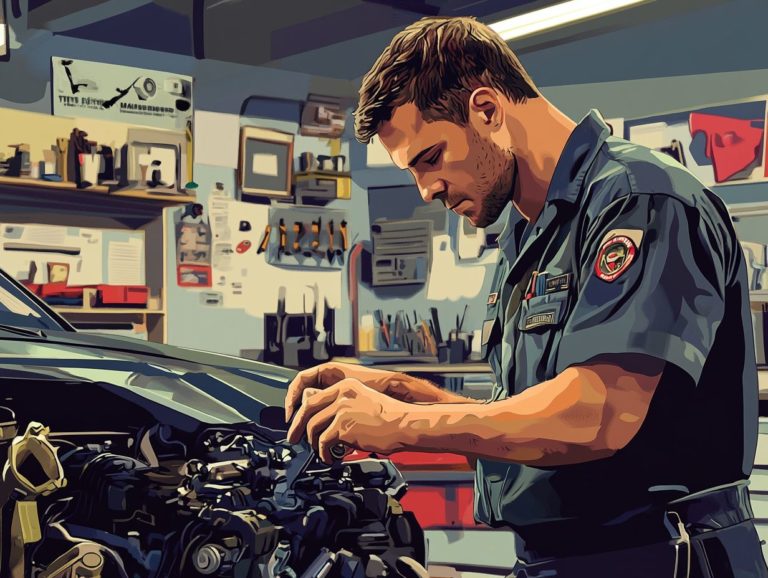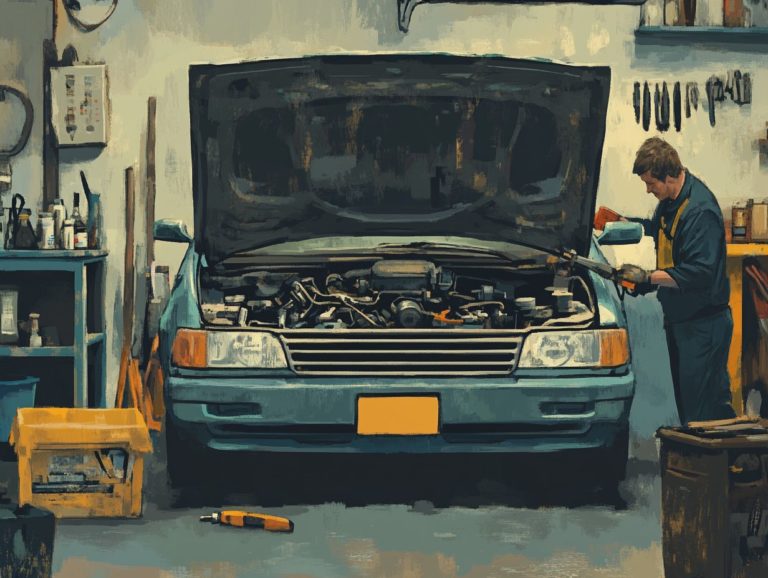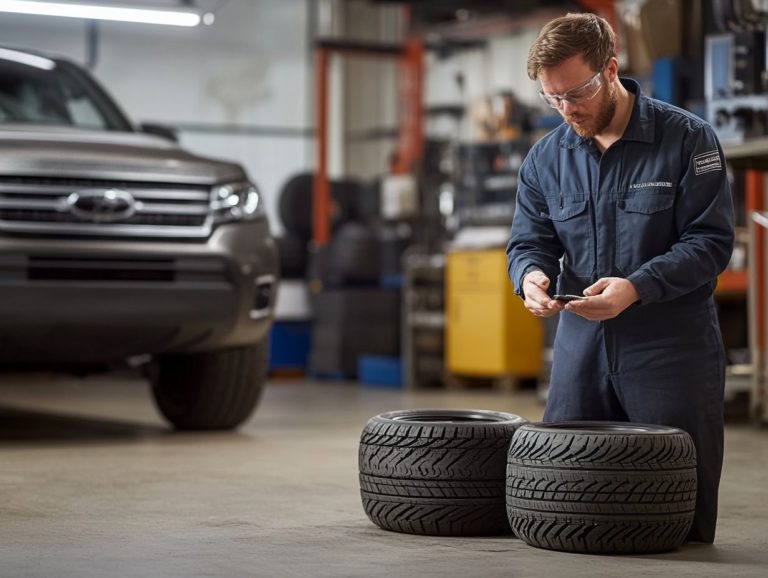How to Flush Your Radiator: A Guide
Flushing your radiator is an important maintenance task that can significantly enhance your vehicle’s performance and extend its lifespan. Over time, rust, debris, and sediment can accumulate, compromising the efficiency of your cooling system.
This guide will equip you with the necessary tools and materials, as well as a comprehensive step-by-step process for flushing your radiator. You’ll also find insights into common issues that may arise during this process.
You will also discover valuable tips for maintaining your radiator, ensuring it remains clean and operates at peak efficiency.
Don t wait until it s too late flushing your radiator can prevent major damage! Keep reading to unlock the secrets to a cooler, more reliable engine!
Contents
Key Takeaways:
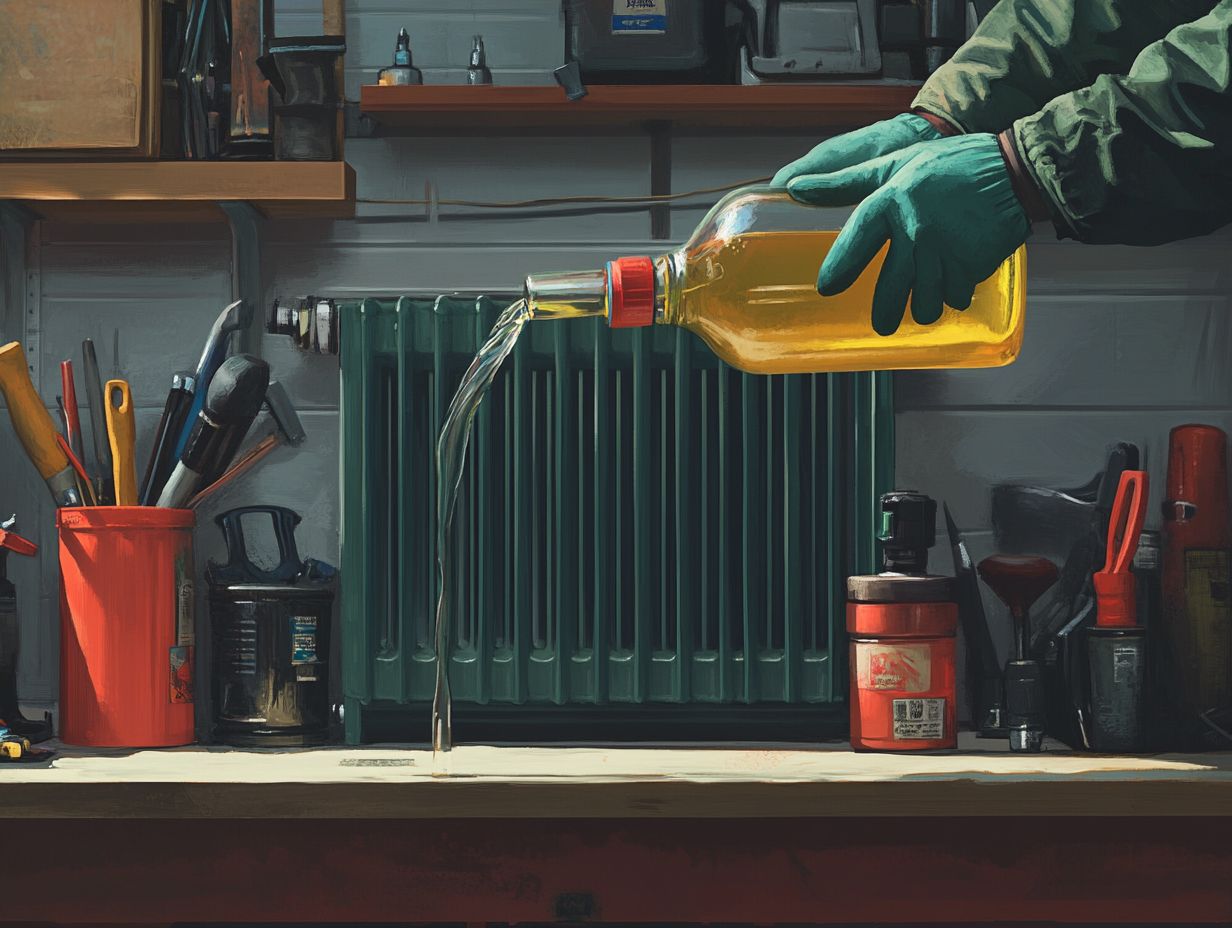
- Regularly flushing your radiator helps maintain its efficiency and prevent costly repairs.
- Proper tools and materials, such as a flush kit and antifreeze, are essential for a successful flush.
- Troubleshoot common issues, like leaks or clogs, to keep your radiator functioning effectively.
Apply what you ve learned to keep your radiator in top condition!
Why is Flushing Your Radiator Important?
Flushing your radiator is an important part of maintaining your vehicle. It allows you to eliminate old antifreeze, rust, and sediment. This simple procedure ensures your cooling system operates efficiently, ultimately prolonging the life of your engine.
A thorough flush does more than just remove contaminants; it prevents potential blockages in the cooling system. This helps your vehicle run cooler and more reliably especially if it has logged over 100,000 miles.
Regular flushing is key to maintaining optimal coolant levels and performance. By tackling the buildup of rust and sediment, you can significantly boost the overall efficiency of your cooling system, reducing the chance of overheating on those long drives.
When contaminants accumulate, they can throttle the flow of coolant, affecting how well your engine regulates temperature. Creating a flushing schedule optimizes coolant circulation and extends the lifespan of crucial components like the water pump and radiator.
Consistent maintenance ensures your vehicle remains in peak condition, giving you peace of mind and shielding you from potential risks that may be lurking beneath the surface.
Tools and Materials Needed
To effectively flush your radiator, it’s crucial to gather a few essential tools and materials that guarantee both safety and efficacy. Collect items like distilled water, an appropriate cleaning fluid, a drain pan, and safety gear such as rubber gloves and safety glasses. These will set you up for success in this important maintenance task.
Equipped with the right tools, you not only streamline the process but also minimize the risks associated with handling toxic antifreeze, ensuring a smoother experience overall.
What You’ll Need to Get Started
To begin flushing your radiator, gather essential items like a drain pan, old coolant containers, and a reliable radiator cleaning fluid. Being well-prepared will make the process thorough and effective. With these tools at your disposal, you ll manage the draining and disposal of old antifreeze safely.
Make sure you have easy access to your vehicle’s drain valve and overflow tank to keep everything running smoothly. Other important items include:
- a funnel to catch any fluid spills during replacement
- safety goggles to protect your eyes from potential splashes
- a pair of gloves to keep your hands clean and shielded from harmful chemicals
- a hose for rinsing out any leftover residue
- a torque wrench for tightening bolts on the radiator cap properly
Each of these tools plays a vital role in your maintenance routine, ensuring both safety and efficiency while you flush and refresh your cooling system.
Step-by-Step Guide to Flushing Your Radiator
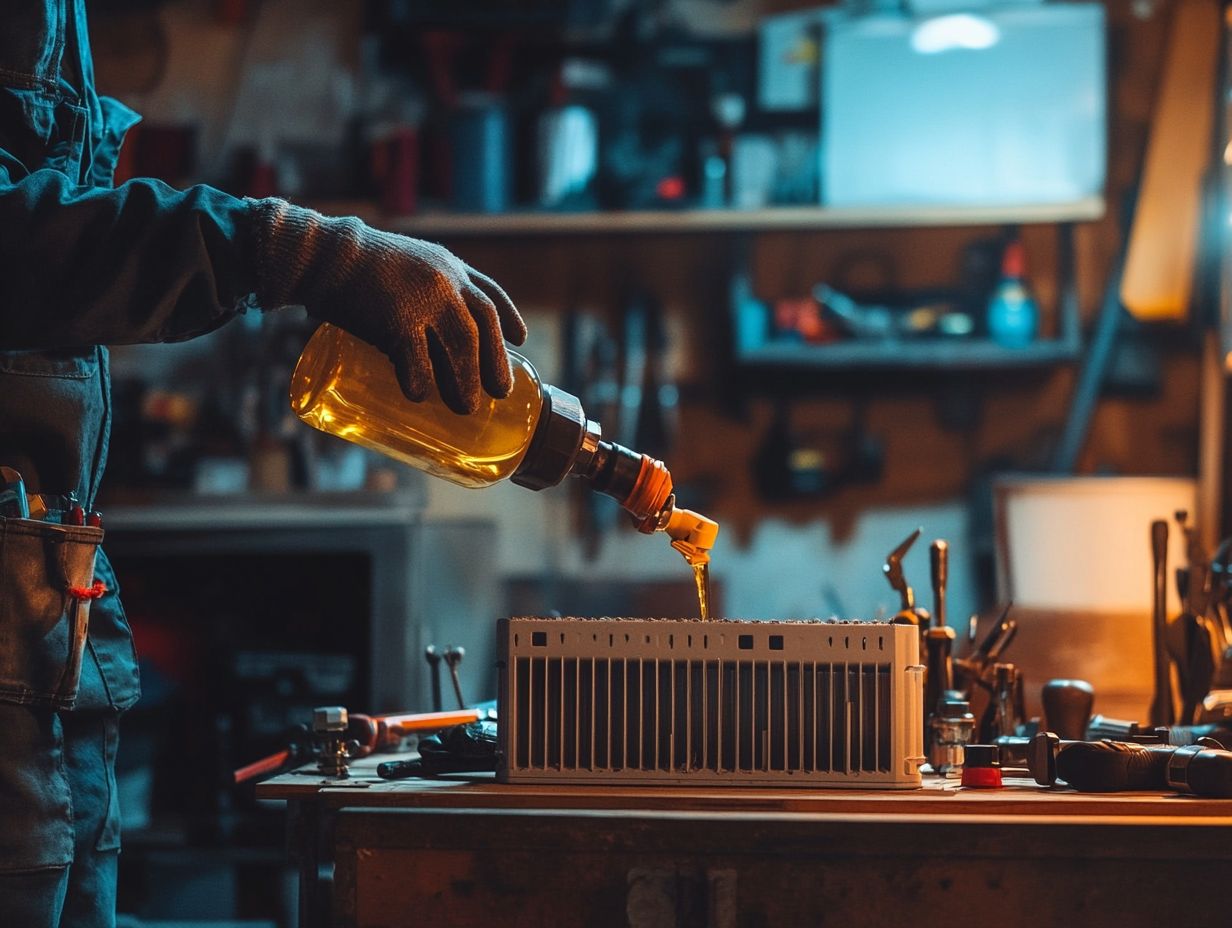
Flushing your radiator can be straightforward when you follow a step-by-step guide. This ensures your cooling system operates at peak efficiency while avoiding common errors.
Start by gathering your tools and materials. Next, follow the instructions to drain the old antifreeze, flush the system with distilled water, and finally refill it with a proper 50/50 blend of coolant.
As you navigate this process, periodically run your vehicle and check for any leaks. This helps make sure everything works properly.
Instructions for Properly Flushing Your Radiator
To flush your radiator properly, start by ensuring the engine is cool. Carefully remove the radiator cap and let the old coolant drain into a pan.
After that, pour distilled water through the system to clean it thoroughly. When the water runs clear, top off the radiator with fresh coolant that meets your vehicle s specifications.
Make sure to securely replace the radiator cap to prevent any leaks or overheating while driving. This step is crucial for your safety; hot coolant can cause burns if mishandled. Give any remaining pressure a moment to release before draining the coolant completely.
Using distilled water is key. Tap water may leave behind mineral deposits that could damage the radiator over time.
Once you see clear water flowing from the drain, it s the perfect chance to introduce the new coolant, ensuring it aligns with the manufacturer s specifications for optimal protection and performance.
Troubleshooting Common Issues
When flushing your radiator, you might encounter common issues that can affect your cooling system. These include coolant leaks, blockages, or incorrect fluid levels. Mastering troubleshooting for these problems is essential for maintaining smooth vehicle operation.
If persistent issues arise, a qualified mechanic can help you understand any complex problems, ensuring your vehicle remains reliable on the road.
How to Handle Any Problems That Arise
Problems like leaks or unexpected coolant levels should be addressed promptly. Start by checking all connections and hoses for leaks and ensure the radiator cap is securely fastened.
If issues persist, consider using advanced automotive repair technology sophisticated tools that help diagnose car problems or consult a professional for a comprehensive diagnosis.
Regularly checking the coolant level and quality can save you considerable trouble in the long run. Establishing a maintenance routine not only extends your radiator’s lifespan but also enhances overall engine performance.
Stay alert for any unusual smells or signs of overheating while driving; these could indicate deeper issues. By being proactive and catching potential problems early, you can avoid costly repairs and ensure that your cooling system operates efficiently throughout the year.
Maintaining Your Radiator for Optimal Performance
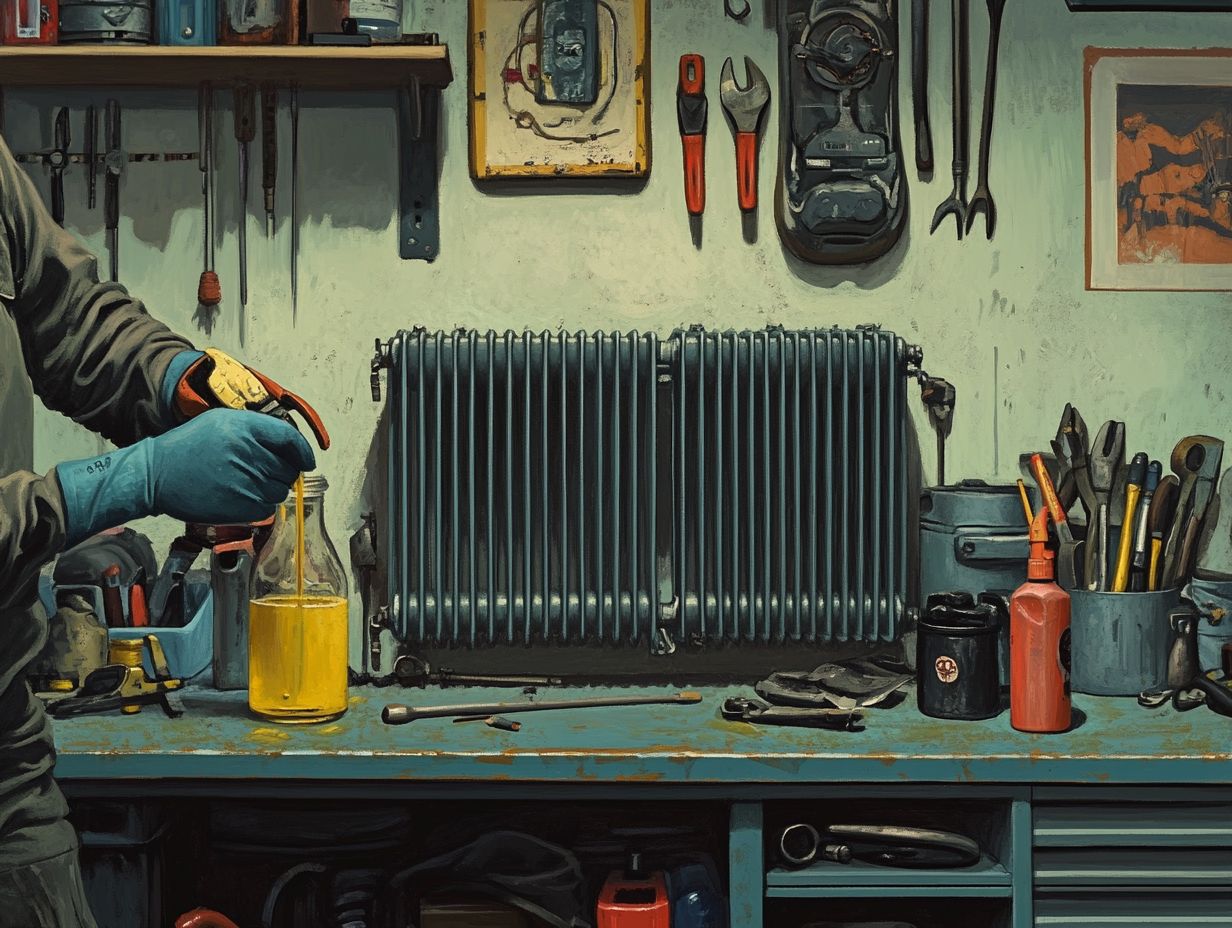
To maintain your radiator for optimal performance, consistently pay attention to detail and commit to regular upkeep. Staying on top of maintenance means your radiator will last longer and perform better!
Key maintenance tasks include:
- Checking coolant levels to ensure they are adequate.
- Cleaning the radiator to remove rust and sediment, which can affect performance.
- Inspecting the heater core for leaks to ensure a comfortable cabin temperature.
These actions can significantly enhance your vehicle s cooling system performance and help prevent costly repairs in the future.
You should know when to replace coolant typically every 30,000 miles or every 4 to 6 years to ensure everything operates at peak efficiency.
Tips for Keeping Your Radiator Clean and Functioning
To keep your radiator clean and functioning at its best, it s essential to adopt several proactive strategies. Regularly flushing the system and monitoring the coolant levels in the overflow tank are just the beginning. Opt for high-quality coolant and commit to routine vehicle maintenance. This prevents contaminants from building up and ensures your radiator operates optimally over time.
By following these tips, you can significantly extend your radiator’s lifespan and maintain the performance of your vehicle’s cooling system.
Conduct regular inspections every six months for early detection of leaks or corrosion, which can lead to radiator failure. Replace the coolant every couple of years to avoid degradation that can occur over time. If you re looking to elevate your maintenance routine, consider adding a corrosion inhibitor to your coolant mixture as a preventive measure.
Don t forget to keep the exterior of the radiator clean from dirt and debris to promote better airflow, especially during hot weather. By incorporating these best practices, you ll ensure a robust and efficient radiator that contributes to the overall longevity of your vehicle.
Frequently Asked Questions
What is the purpose of flushing your radiator?
Flushing your radiator removes built-up sediment, rust, and other debris that can clog your cooling system and affect its performance.
How often should I flush my radiator?
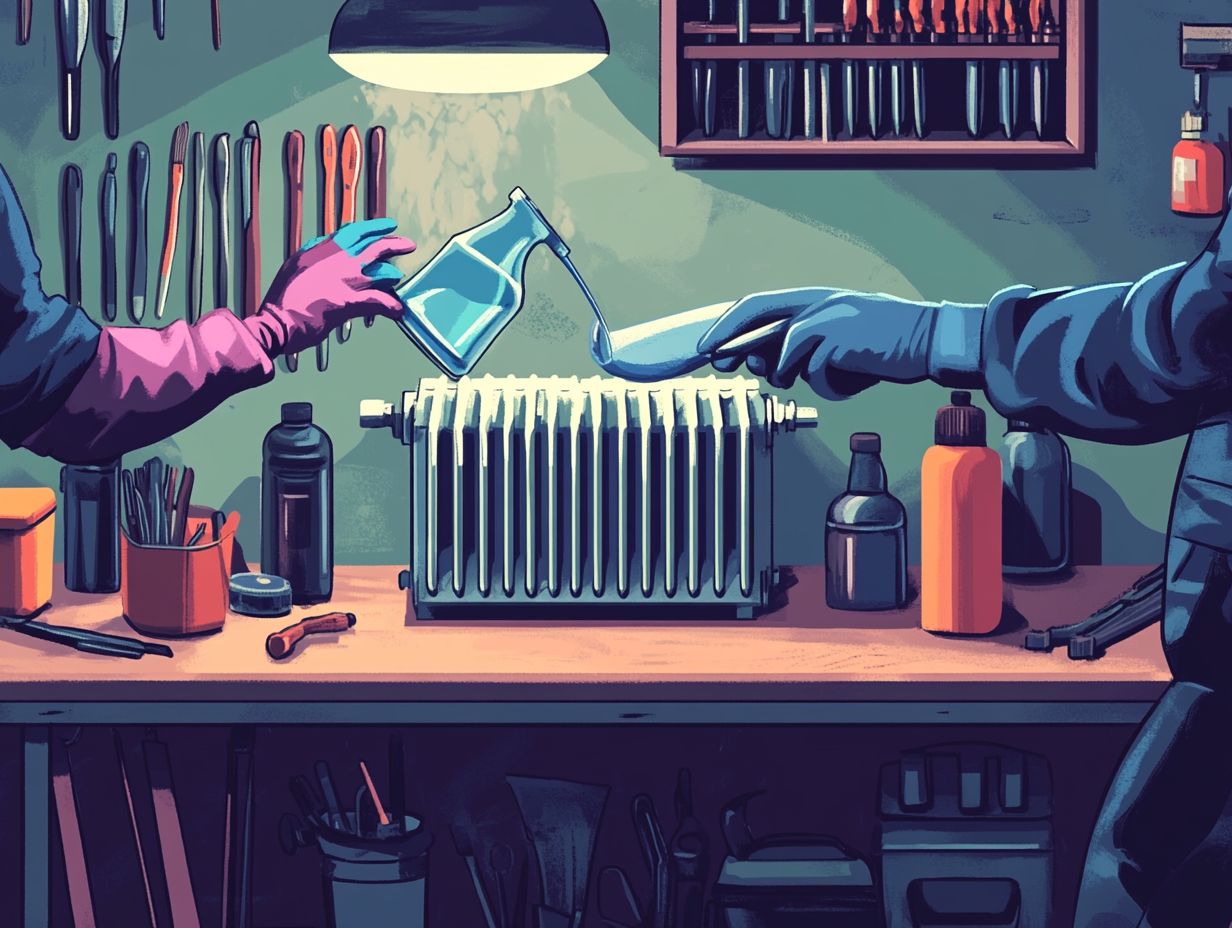
It is recommended to flush your radiator every 2 to 3 years or every 30,000 miles to maintain its efficiency and prevent potential damage.
What tools do I need to flush my radiator?
You will need a pair of pliers, a radiator flush solution, a hose, a drain pan, and a funnel for pouring the flush solution back into the radiator.
Can I flush my radiator on my own?
Yes, flushing your radiator can easily be done at home with the right tools and steps. However, if you are not confident in your abilities, it is best to have a professional do it.
How long does it take to flush a radiator?
The entire process of flushing a radiator typically takes about an hour, but it may take longer depending on your car and the severity of the build-up.
Is it necessary to flush my radiator if my car is not overheating?
Yes, it is still important to flush your radiator even if your car is not overheating. Build-up and debris in the radiator can lead to future issues and costly repairs.
Act now to keep your radiator in top shape! Check your radiator today to ensure it s functioning properly.

